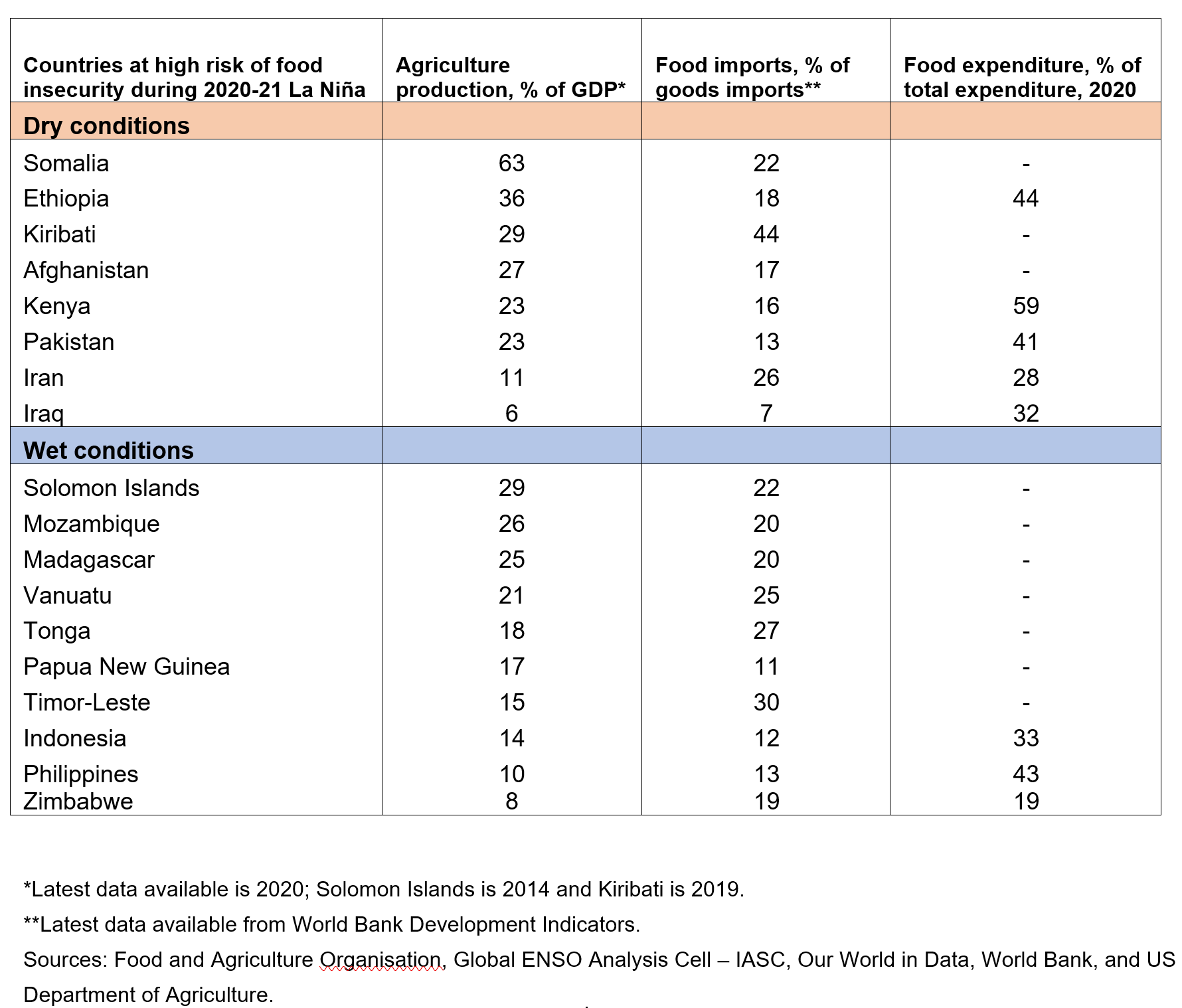World—Another La Niña may further disrupt food output and lift prices
Two consecutive La Niña years have disrupted global food supplies and contributed to higher agricultural prices. La Niña brings heavy rains to most of Asia’s agriculture producers and drought to many US and South American producers. Over the two years to July 2022, prices for US wheat have risen 49%, while maize (up 111%), soybeans (78%) and arabica coffee (74%) prices are also higher, notwithstanding some decline in the past few months. The Bureau of Meteorology forecast a roughly 70% chance of a third consecutive La Niña weather event later this year, which if it materialises, has only happened four times since 1900.
Another La Niña could further damage food supply and raise prices at a time when crop supplies are tight, including due to the Russia-Ukraine war. According to the Food and Agriculture Organisation, the 2020-21 La Niña episode put countries in Africa, Asia and the Pacific at high risk of agricultural output losses and worsening food security (Table). These countries are likely to be vulnerable to another La Niña event.
What’s more, further bad weather conditions for the world’s major food producers and exporters in the US, Europe, China, India and Latin America would drive up food import prices for low-income countries, where households spend a high share of their income on food. And increased trade protectionism could exacerbate the problem. Although the share of restricted traded calories has fallen to 6.8% in July, food export bans to shore up domestic supplies remain in 20 countries on 30 products. The possibility of more frequent and severe weather events in the future is likely to remain a notable challenge for agriculture production and food security, posing economic and social risks for emerging markets.


